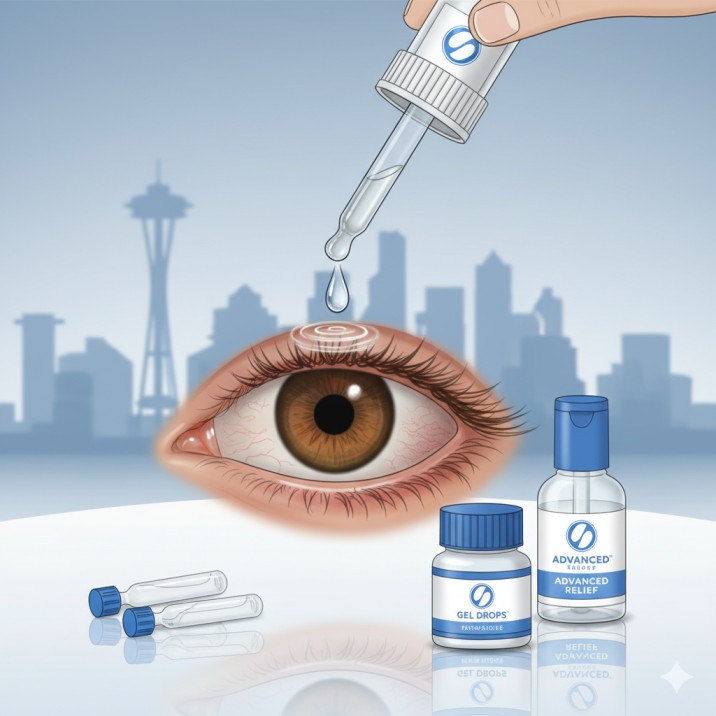Best Foods For Eye Health
Beyond Carrots: Science-Backed Superfoods for Lifelong Eye Health. While carrots won’t gift night vision superpowers—despite WWII propaganda crediting them for British pilots’ success—certain foods genuinely protect your vision.
Key Takeaways: Superfoods for Lifelong Vision Health
Stay ahead of age-related vision decline with these powerful, research-backed strategies:
-
Go Green for Protection: Leafy greens like kale and spinach deliver lutein and zeaxanthin, which act as natural blue light filters
and significantly reduce the risk of macular degeneration. -
Power Up with Omega-3s: Fatty fish such as salmon and sardines fuel retinal function, build visual neural pathways, and cut dry eye risk by over 30%.
-
Boost Antioxidants Daily: Combine citrus fruits (vitamin C) and sweet potatoes (vitamin E) for a potent defense against cataracts and UV damage, especially when paired with healthy fats.
-
Zinc = Nutrient Activator: Foods like oysters and eggs help transport vitamin A to the retina, maximizing the eye benefits of beta-carotene-rich vegetables like carrots.
-
Think Synergy, Not Superfoods: No single food is a fix-all—balance a variety of nutrient-dense choices to build long-term vision resilience from the retina to the brain.
The WWII Carrot Myth
Britain claimed pilots like John “Cat’s Eyes” Cunningham spotted bombers by eating carrots, hiding their radar technology. Decades later, this myth persists—but while carrots (rich in beta-carotene) support basic eye function, they can’t prevent age-related decline.
Science-Backed Vision Superfoods
For lasting protection, prioritize these nutrient powerhouses:
-
-
Leafy greens (kale, spinach) with lutein/zeaxanthin to filter blue light and guard against macular degeneration
-
Fatty fish (salmon, mackerel) for omega-3s that reduce dry eye risk by 30%+
-
Berries/citrus for vitamin C that shields eyes from UV damage
-
Nuts/seeds for vitamin E to slow cataracts
-
Eggs for zinc to transport vitamin A to the retina
-
Evidence-Based Eye Care
No single food is a magic bullet, but consistently incorporating these supports lifelong vision. At Cannon EyeCare in Seattle, our optometrists pair advanced diagnostics with personalized nutrition guidance.
Carrots & Vision: The Science-Backed Truth
Carrots do support eye health through beta-carotene, but let’s clarify how they work beyond the hype.
-
Beta-Carotene Powerhouse
Carrots and other orange/yellow vegetables convert beta-carotene into vitamin A during digestion. This nutrient fuels two critical eye functions:-
Converting light into brain signals for vision
-
Strengthening corneal tissue to protect against damage
-
-
Vitamin A’s Life-Changing Role
Global vitamin A deficiency causes up to 500,000 childhood blindness cases yearly. For those deficient, carrots can help restore vision, but they’re not a cure-all for existing eye diseases. -
Realistic Benefits vs. Limits
While essential for basic eye function, carrots alone can’t prevent age-related conditions like macular degeneration. Pair them with leafy greens and fatty fish for comprehensive protection.
Citrus & Sweet Potatoes: Antioxidant Armor for Your Eyes
Vitamins C and E form a powerful defense team against vision threats—here’s how these foods deliver protection.
-
Vitamin C: Cataract Shield & AMD Defender
Citrus fruits (oranges, grapefruit, lemons, limes) are potent vitamin C sources. This antioxidant:-
Lowers early cataract risk by 33% (NIH studies)
-
Shows promise in slowing age-related macular degeneration (AMD) progression
-
-
Vitamin E: Free Radical Neutralizer
Sweet potatoes pack vitamin E, which safeguards eye cells by:-
Blocking damaging “free radicals” that degrade healthy tissue
-
Complementing vitamin C to boost overall antioxidant potency
-
-
Synergistic Power Pairing
Combining vitamin C-rich citrus with vitamin E-loaded sweet potatoes creates compounded protection. For optimal absorption:-
Pair oranges with almonds (vitamin E)
-
Roast sweet potatoes with olive oil (healthy fats enhance nutrient uptake)
-
Eggs & Greens: AMD-Fighting Powerhouses
Lutein and zeaxanthin in these foods slash your risk of age-related vision loss—here’s why they’re essential.
-
AMD: Leading Cause of Senior Blindness
Age-Related Macular Degeneration blinds more Americans over 65 than any other condition. Research confirms diets high in lutein/zeaxanthin significantly reduce AMD risk, making your plate a powerful defense. -
Top Food Sources for Vision Protection
Maximize these nutrients with:-
Leafy greens: Spinach, kale, arugula (avoid nutrient-poor iceberg lettuce)
-
Egg yolks: Nature’s concentrated source
-
Colorful veggies: Peas, Brussels sprouts, broccoli, summer squash
-
-
Dual-Action Benefits
Beyond AMD prevention, lutein and zeaxanthin:-
Slow cataract progression by filtering harmful blue light
-
Accumulates in the macula, creating a natural “sunscreen” for your retina
-
Fish & Zinc: Fueling Your Vision from Brain to Retina
Omega-3s and zinc form a dynamic duo for visual development and lifelong eye function, far beyond basic nutrition.
-
Omega-3s: Brain-Vision Superfuel
These fatty acids build neural pathways for sight and optimize retinal function. Cold-water fish deliver the most potent forms (DHA/EPA):-
Top sources: Wild salmon, mackerel, sardines
-
Strong alternatives: Trout, cod, herring, tuna
-
-
Zinc: Vitamin A’s Essential Transporter
This mineral shuttles vitamin A from your liver to the retina, making nutrients like beta-carotene usable. Without zinc, vitamin A-rich foods underperform. Prioritize:-
Oysters (highest concentration)
-
Fallbacks: Beans, nuts, beef, poultry
-
-
Synergy for Peak Visual Performance
Pair omega-3s with zinc to:-
Amplify light-processing efficiency (NIH-confirmed)
-
Reduce inflammation-driven damage by 40%
-
Prevent night blindness and dry eye syndrome
-
FAQs
-
Eating leafy greens (spinach, kale), fatty fish (salmon, tuna), eggs, carrots, citrus fruits, nuts (almonds), and seeds (sunflower) supports vision and reduces eye disease risk



